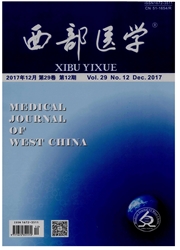

 中文摘要:
中文摘要:
目的对合并糖调节受损(IGR)的急性冠状动脉综合征(ACS)患者,探讨其血清中白介素-6(IL-6)和高敏C反应蛋白(hsCRP)的变化及临床意义。方法入院治疗的共56例ACS患者,按照标准方法行空腹血糖测定和口服葡萄糖耐量(OGTT)试验,经筛除显性糖尿病后分为ACS合并IGR30例(A组)和不合并IGR的ACS26例(B组),另选取冠脉造影正常者20例为对照组(C组)。除查体和常规实验室检查外,三组均分离空腹血清测定IL-6和hs—CRP水平。结果A组病人甘油三脂(TG)水平和体重指数(BMI)同时较B组增高(P〈0.05)。A组和B组血清IL-6和hsCRP水平均较C组高,其中A组较B组升高更明显(P均〈0.05),IL-6和hs-CRP呈正相关(r=0.671,P〈0.01)。结论合并IGR的ACS患者全身炎症反应程度更剧烈,在治疗上应加强多种措施综合干预,以改善预后。
 英文摘要:
英文摘要:
Objective To investigate the effects of serum IL-6 and hs-CRP in acute coronary syndrome (ACS) combined with impaired glucose regulation (IGR). Methods 56 cases with ACS performed with fast blood glucose and oral glucose tolerance test(OGTT) were divided into group A (ACS with IGR, n=30), group B (ACS without IGR, n= 26) controlled with patients without coronary heart disease ( group C, n=20). Results The serum triglyceride(TG) and body mass index (BMI) of group A were higher than those of group B. The levels of IL-6 and hs-CRP in group A and B were higher than that in group C. The levels of IL-6 and hs-CRP in group A were higher than that of group B. The hsCRP was positive related with IL-6. Conclusions The systemic inflammation response may be aggravated in ACS combined with IGR.
 同期刊论文项目
同期刊论文项目
 同项目期刊论文
同项目期刊论文
 期刊信息
期刊信息
